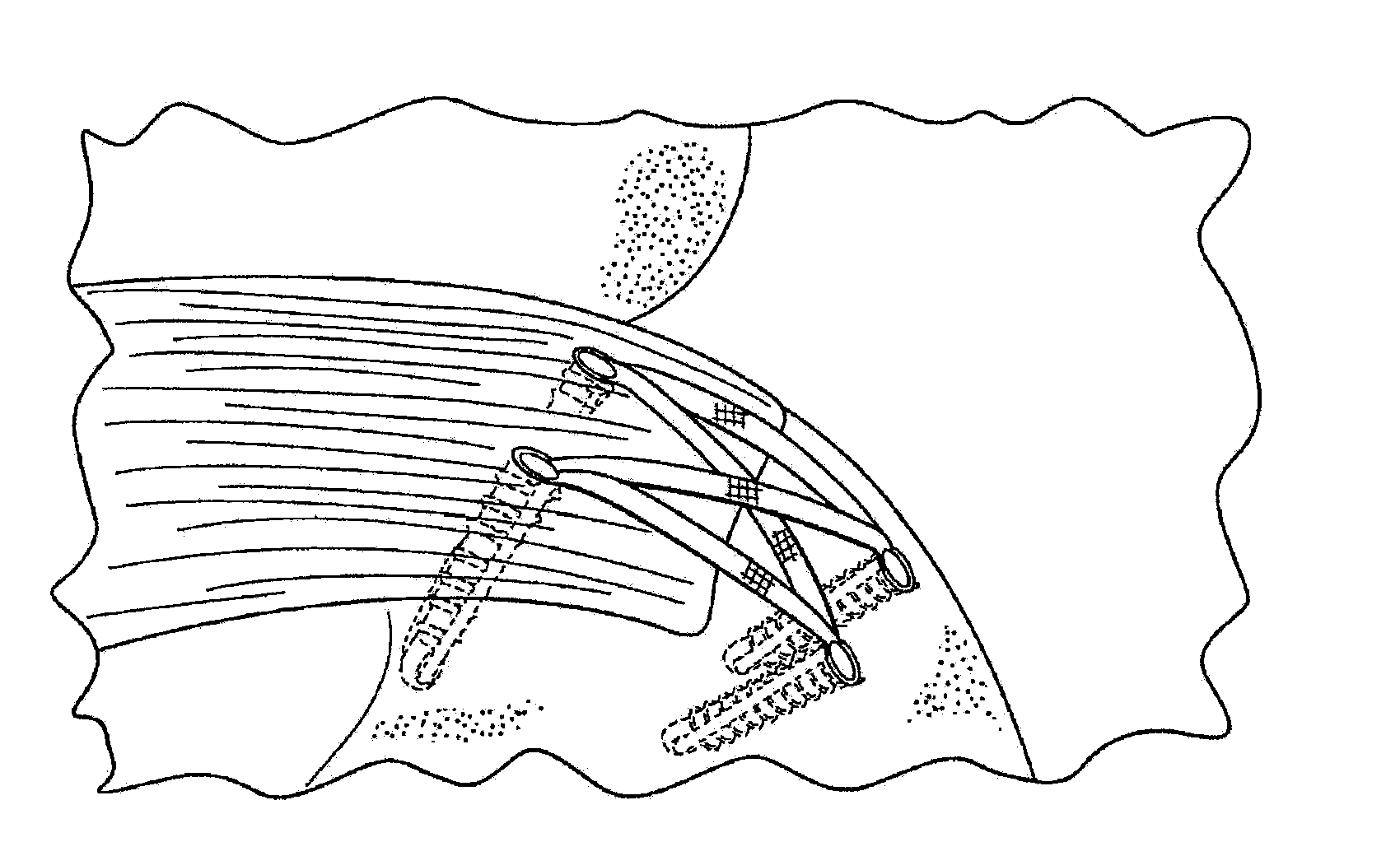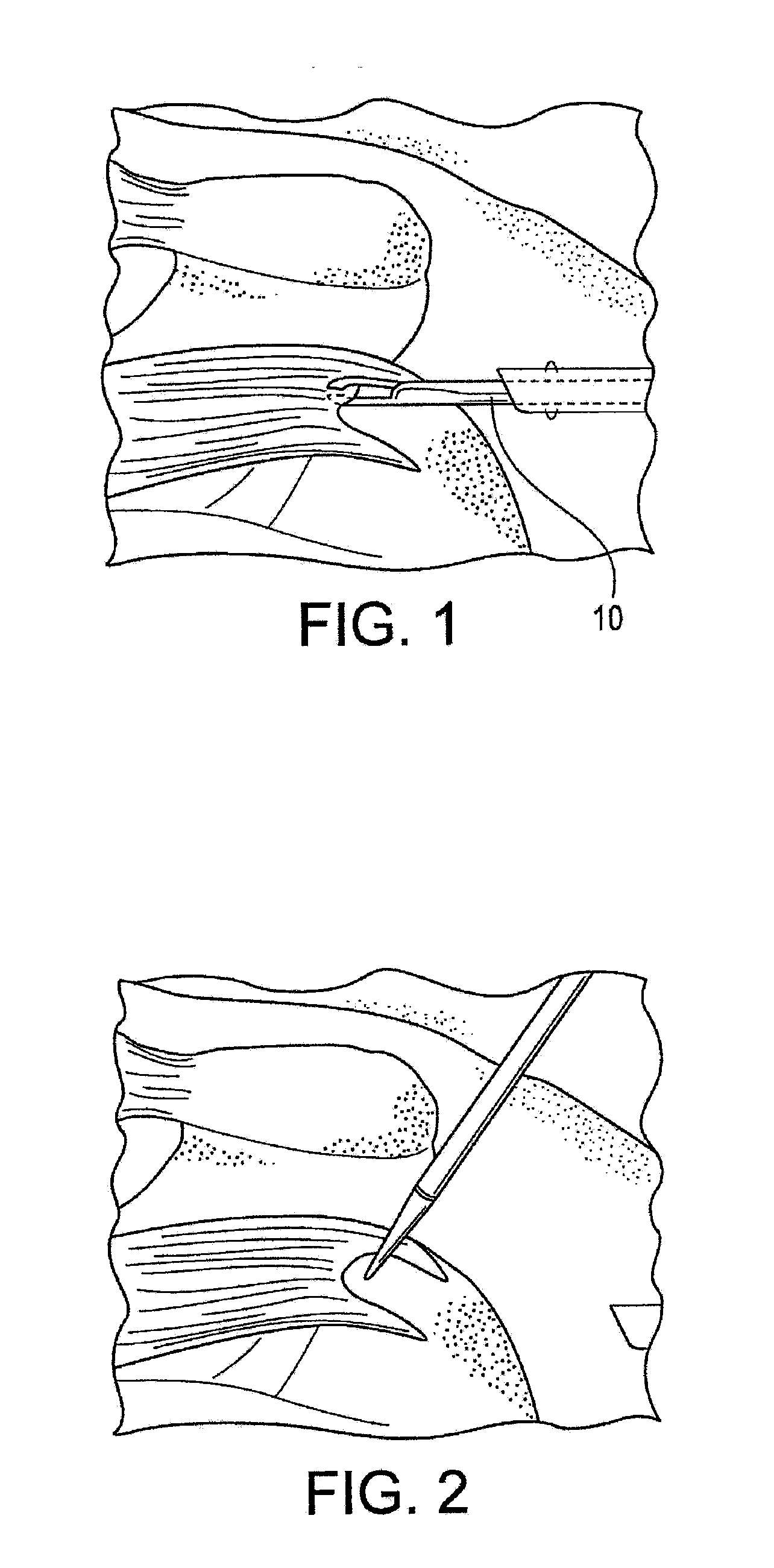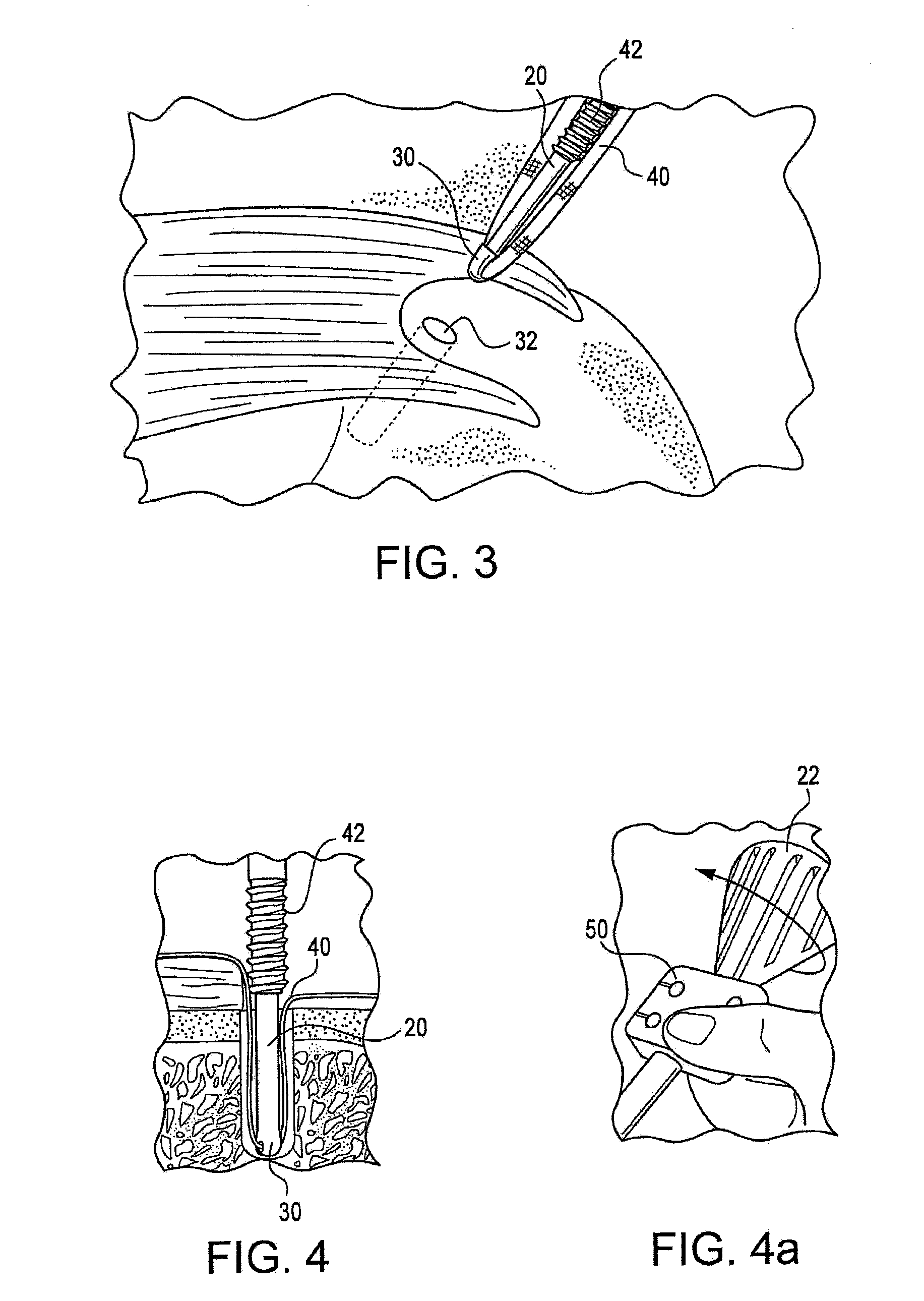Fenestrated swivel anchor for knotless fixation of tissue
a swivel anchor and tissue technology, applied in the field of fenestration swivel anchors for knotless fixation of tissue, can solve the problems of knot tying during surgery, tedious and time-consuming, knot deformation or collapse, etc., and achieve the effect of promoting bone in-growth and increasing the healing zon
- Summary
- Abstract
- Description
- Claims
- Application Information
AI Technical Summary
Benefits of technology
Problems solved by technology
Method used
Image
Examples
Embodiment Construction
[0016]The present invention provides apparatus and methods for knotless tissue fixation using a swivel anchor device.
[0017]FIG. 1 illustrates a side view of a human shoulder of a patient undergoing a rotator cuff repair in accordance with an exemplary embodiment of the present invention. The patient may be positioned in the beach chair position using the Arthrex Beach Chair Lateral Traction Device or in a lateral decubitus position using the Arthrex 3-Point Shoulder Distraction System. Access to the subacromial space is facilitated with a variety of cannulas.
[0018]First, and as illustrated in FIG. 1, the mobility of the tear is assessed using, for example, a tissue grasper 10 such as the Arthrex KingFisher™ Suture Retriever / Tissue Grasper, to determine whether a U or L-shaped component exists. Where large tears extend to the superior aspect of the glenoid, margin convergence suturing is performed to reduce volume and strain on the repair. Subsequently, the length and width of the ro...
PUM
 Login to View More
Login to View More Abstract
Description
Claims
Application Information
 Login to View More
Login to View More - R&D
- Intellectual Property
- Life Sciences
- Materials
- Tech Scout
- Unparalleled Data Quality
- Higher Quality Content
- 60% Fewer Hallucinations
Browse by: Latest US Patents, China's latest patents, Technical Efficacy Thesaurus, Application Domain, Technology Topic, Popular Technical Reports.
© 2025 PatSnap. All rights reserved.Legal|Privacy policy|Modern Slavery Act Transparency Statement|Sitemap|About US| Contact US: help@patsnap.com



